My family and I love tamarind chutney. It has a sweet and sour fruity taste that is in perfect balance on the palate. It is a must if you are serving Indian high tea as many of the savory offerings are paired with it. I use it:
- As a condiment for samosas (triangular, filled pastries), tikis (potato cutlets) and kachoris (disc-shaped, lentil filled pastries);
- As a topping for Indian snacks like Behl puri (crisp rice puffs and vegetable salad), papadi chaat (thin pastry dough with boiled potatoes and chickpeas and spices) and my favorite, dahi vadas (lentil dumplings in yogurt);
- As a dressing for pulses, fruits, and vegetable salads – yes, we Indians spice up our fruits into a savory snack; and,
- Non-traditionally, I use tamarind chutney or tamarind pulp in my vinaigrettes and meat marinades. Tamarind acts as an emulsifier and imparts an amazing flavor in dressings and it is a terrific meat tenderizer and meat topping – A1 Steak Sauce uses tamarind as a major component.
Prep time: 15 minutes
Cook time: 5 minutes
Yield: 4 cups
Click here to get the recipe for Tamarind Pulp.
Ingredients
- 2 cups Tamarind pulp, Click on the above link for the recipe
- 1 tablespoon *Kala Namak (Indian Black Salt) – It is NOT the same as Himalayan pink salt (see note)
- 1/4 cup sugar – plus a little more to correct for taste
- 1/4 cup *Jeera (cumin seeds)
- 1 teaspoon *cayenne pepper – or to taste
- enough water to thin out pulp to a pouring consistency
- table salt, to correct for taste (pink salt or any other)
INSTRUCTIONS

Indian Black Salt, NOT Himalayan pink salt 
Indian black salt
1.Pour tamarind pulp into a 2-quart pan and set to heat. You just want to heat it, not boil it.
2. Add enough water to yield a pouring consistency, about a cup to two cups depending on the thickness of the pulp. Turn off the burner as the mixture begins to form bubbles around the edges of the pan.
3. Add the Black salt and sugar. Add cayenne pepper, if using.
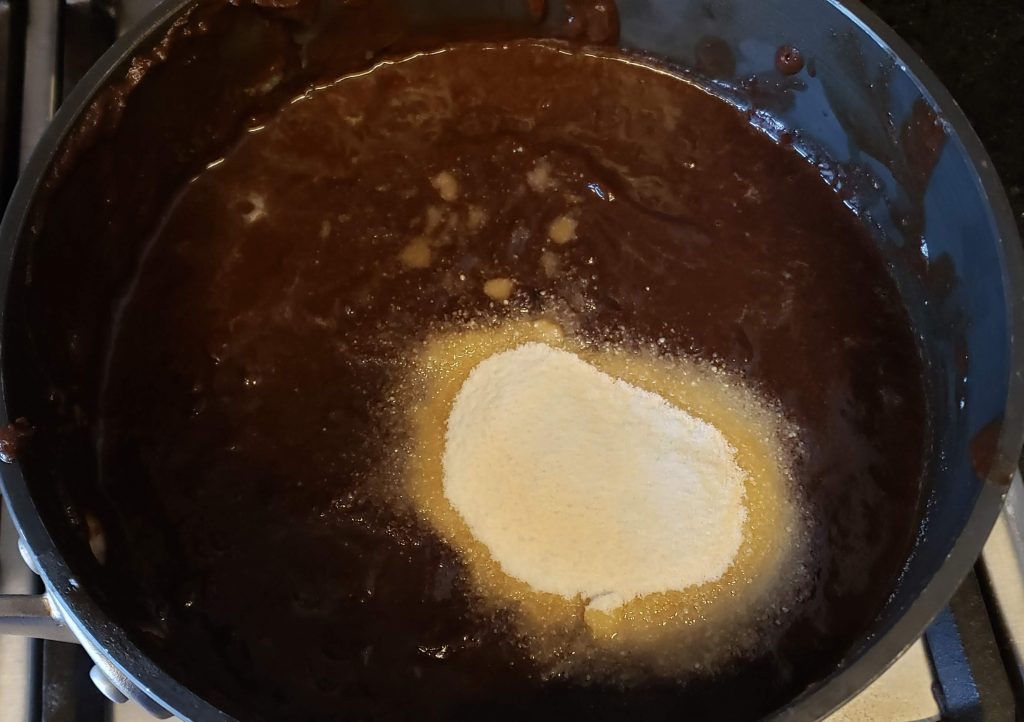
dissolve sugar in tamarind pulp 
Add 1 tablespoon black salt and 1/4 cup sugar. Heat to dissolve.
4. Separately, place 1/4 cup of cumin seeds in a non-stick frying pan and swirl them around over medium heat. They will expand and start to brown. Keep swirling the seeds in the pan until they just begin to darken to a chestnut dark brown color. Cool slightly and grind using either a mortar and pestle or crush them under a rolling pin.
5. Store any remaining cumin powder in a labeled glass jar with a tight-fitting lid. It makes for an excellent condiment for other dishes.
6. Add 2 tablespoons of the ground cumin powder to the pan with the tamarind.
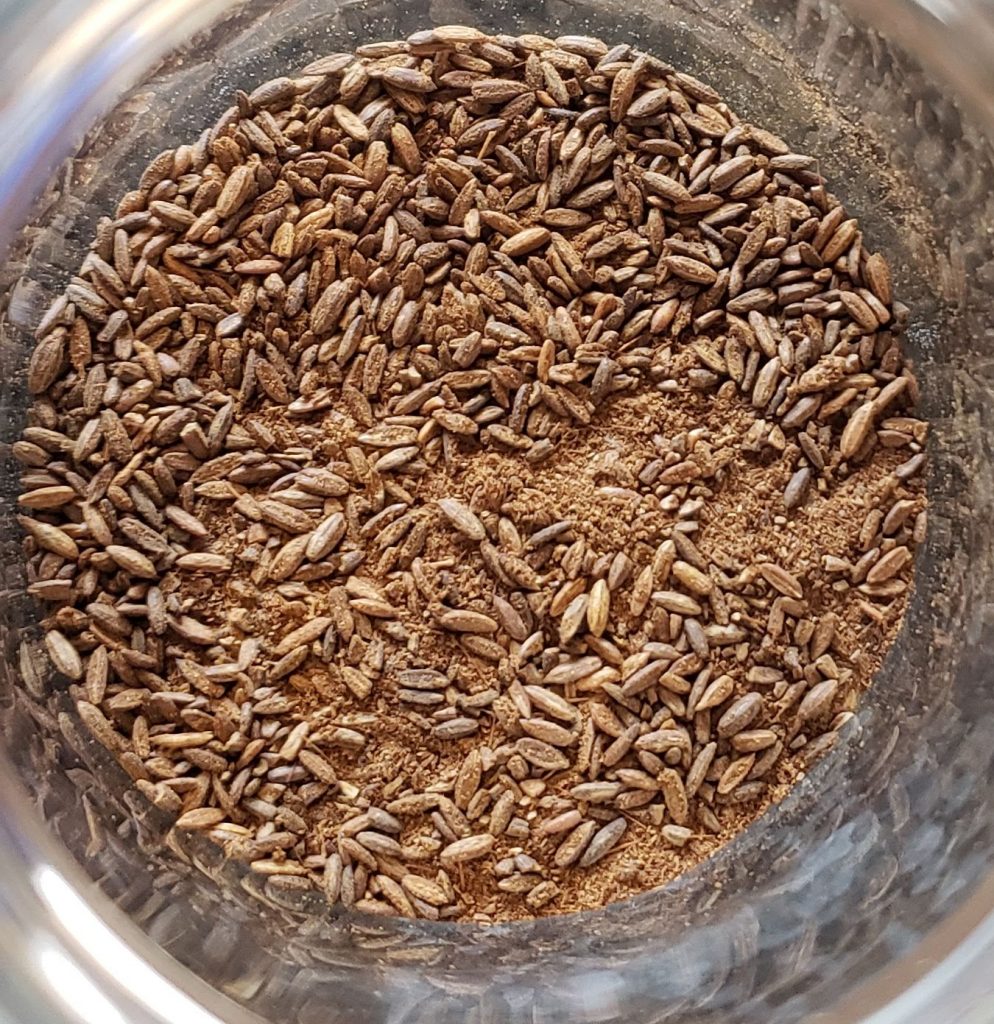
dry roasted cumin, partially ground 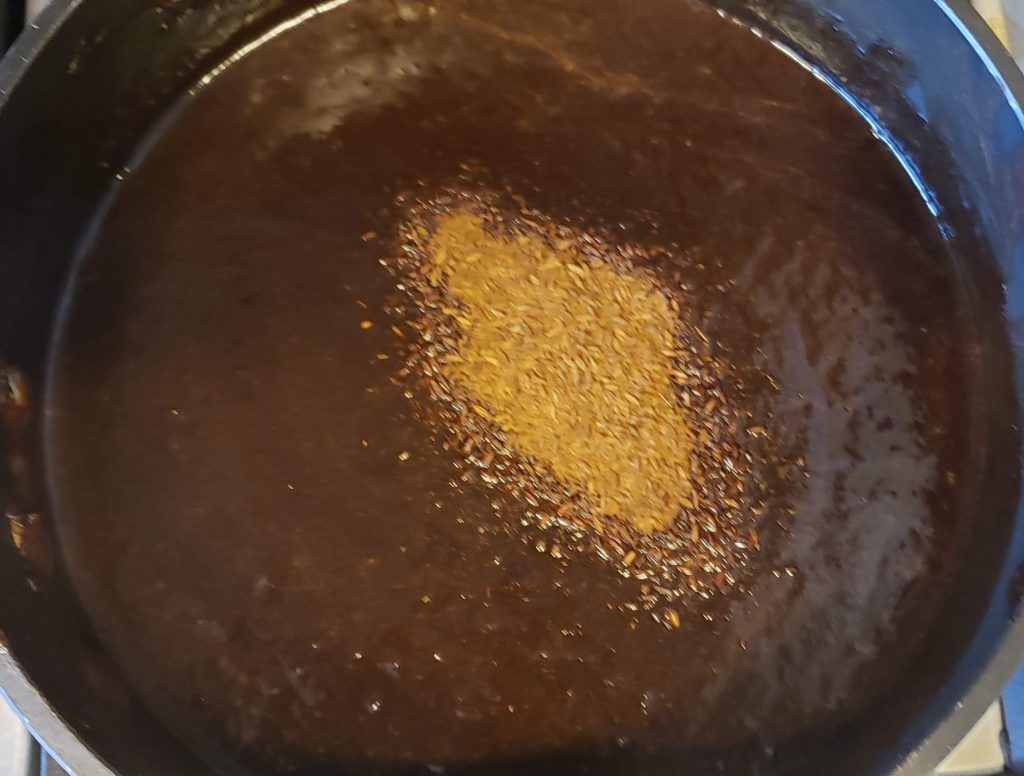
2 tablespoons cumin powder to 4 cups tamarind liquid
7. Mix well and taste. Correct the salt and sugar as needed. Correct for cumin powder, if needed.
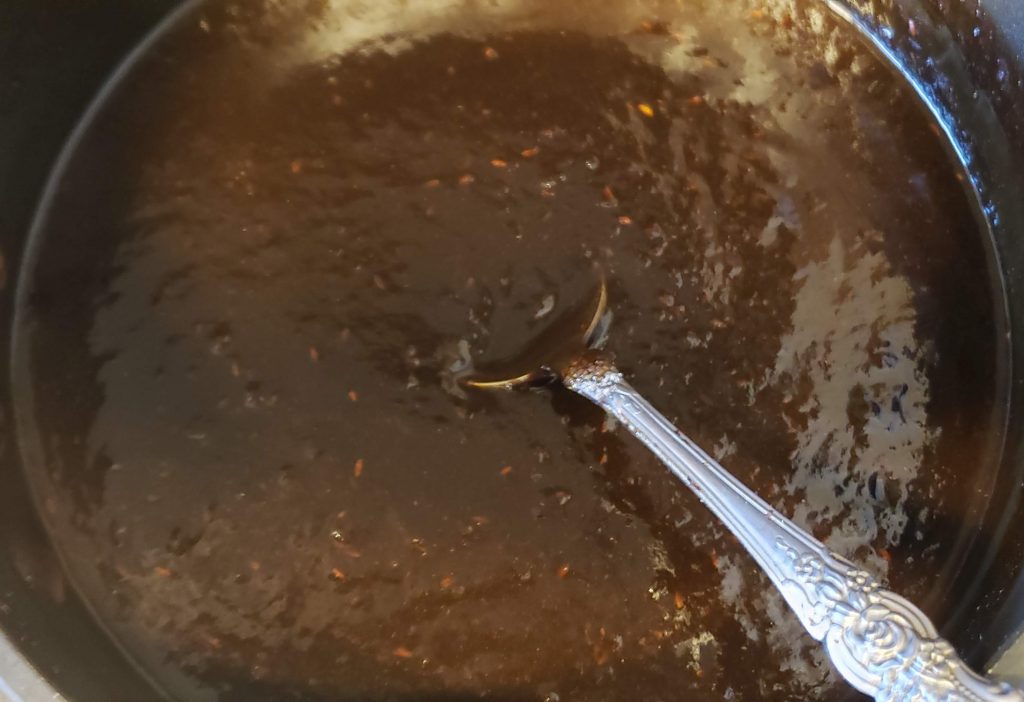
Tamarind Chutney
8. Store chutney in glass jars with a tight-fitting lid. Tamarind chutney will keep for a week in the refrigerator or 9 months to 1 year in the freezer.
Note: *These ingredients may be purchased at your local Indian grocer. For this reason, I have given you the name of the spice both in English and Hindi as that is the name (written phonetically in the English alphabet) you will find it under when you go shopping.
Spices impart specific flavors and aromas that enhance the overall flavor of the dish when used correctly. Moreover, they have a lot of health benefits. The list below specifies:
- The name of the spice;
- The flavor(s) it imparts;
- How and when it may be used; and, finally,
- It’s health benefits.
Jeera/Geera (cumin seeds) – Earthy, smoky. The whole form is added as one of the first spices when seasoning cooking oil. If using it in the powdered form to season cooked food, add it after the burner has been turned off. Used whole when flavoring cooking oil in vegetarian and meat dishes. The whole form is added as one of the first spices when seasoning cooking oil. Used as a powder either by itself or as part of Garam Masala after cooking for both vegetarian and meat dishes. Whole seeds are boiled in water to make a tisane to aid digestion (reduces gas), for weight loss, and relaxation. Rich in iron – it has 66g of iron per 100g which is five times the daily dose. Aids in digestion; improves blood cholesterol; promotes weight loss and fat reduction; and, helps promote sleep. It also helps with diabetes. It has both stimulating and calming effects. Improves cognitive function and helps prevent cognitive disorders such as dementia and Alzheimers. It also improves lactation.
Cayenne pepper – Spicy, sharp. Added directly after the dried whole spices either in its fresh or powdered form. When using its whole, dried form add it in the middle when seasoning the oil. Minced and mixed in Chaat and bean salads or used whole, as a condiment or in a mixed vegetable salad. Hot peppers are often eaten as pickles. Powdered, whole dried, or fresh minced chili peppers are used in cooking and added directly after the dried spices to season the cooking oil. Hot peppers have anti-bacterial; anti-fungal; anti-inflammatory; and, anti-oxidant properties. Helps fight the cold/flu; reduces joint pain; improves metabolism; promotes weight loss; and, are rich in vitamins A, B6, C, K1, and minerals like potassium and copper.
Kala Namak (Indian Black Salt) – Salty, sour. Used in the same manner as table salt when cooking. It is used extensively as a condiment in cooking and in spice blends called Chaat Masala. Consists mostly of sodium chloride, however, its hard-boiled egg smell comes from its sulfur content.
Black salt has comparatively less sodium, it helps reduce bloating. In Ayurvedic medicine, it is considered to be a “cooling” spice. That is, it is calming and alkaline. Black salt is useful for curing depression problems. It helps to preserve both, melatonin and serotonin hormones, which are essential for a peaceful and unhindered sleep.
Black salt is rich in potassium which helps to relax muscles and reduces muscle cramps. Potassium also helps to improve the absorption of many other minerals. Black Salt is recommended by many health professionals for its medicinal benefits as it is an antacid, anti-flatulent, antioxidant, digestive stimulant and a laxative. The American Society for Microbiology and European Pharmaceutical and Medical Research Journals have touted the benefits of this salt.
Written by Anju Kapur of Anju’s Table. All content and images on this site are copyright protected. Please do not use any of my images without my permission. Should you wish to share this recipe on your site, please add a link to this post as the source.
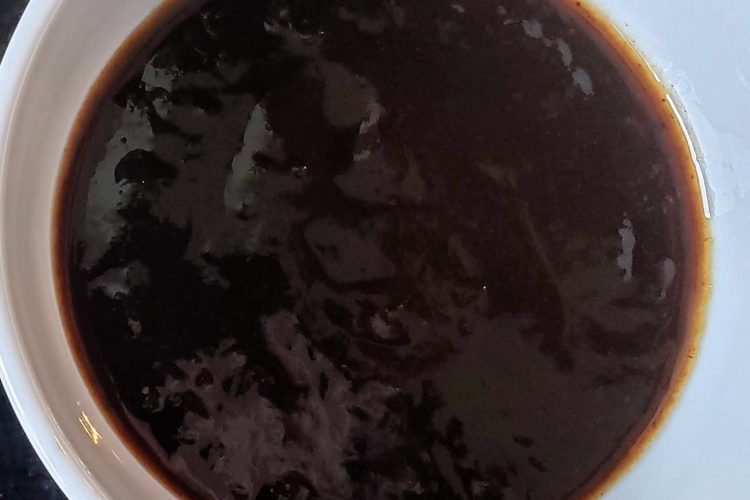
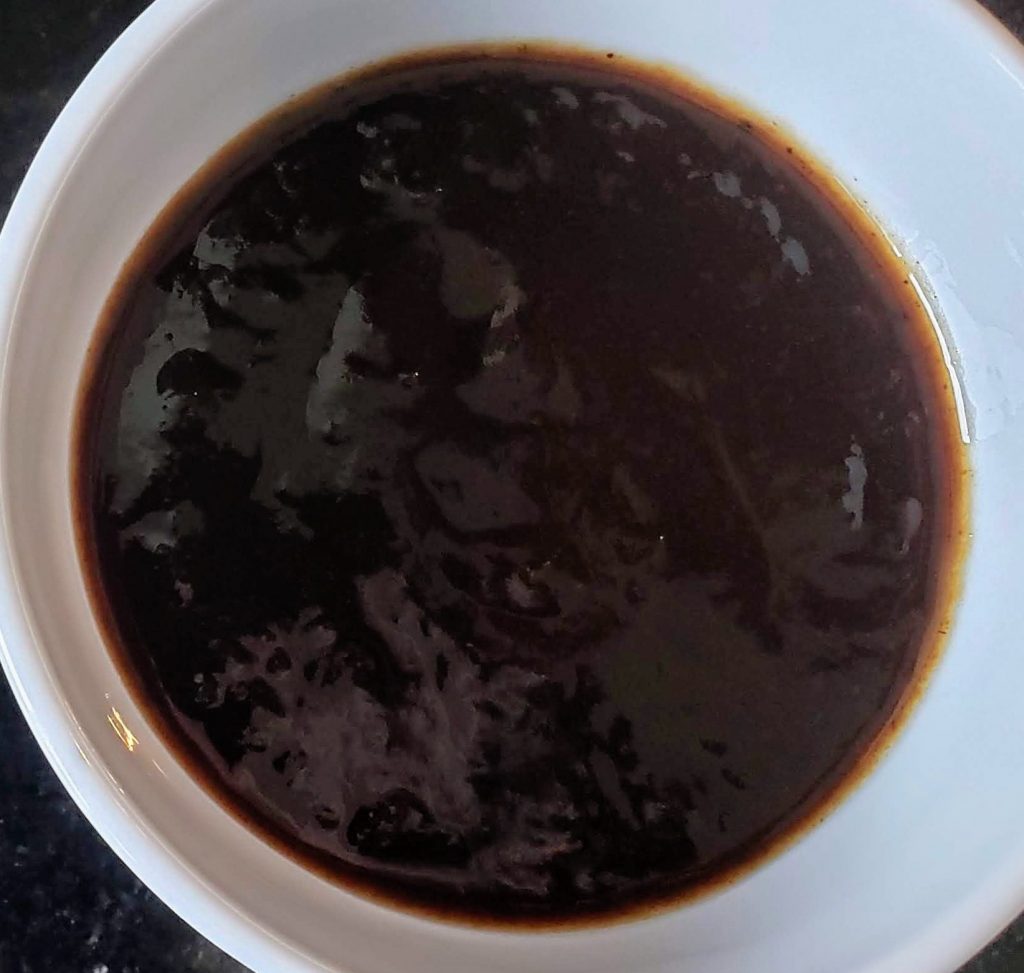
[…] Serve with tamarind chutney and mint/coriander chutney. Click on the link for tamarind chutney to get the recipe. The recipe […]